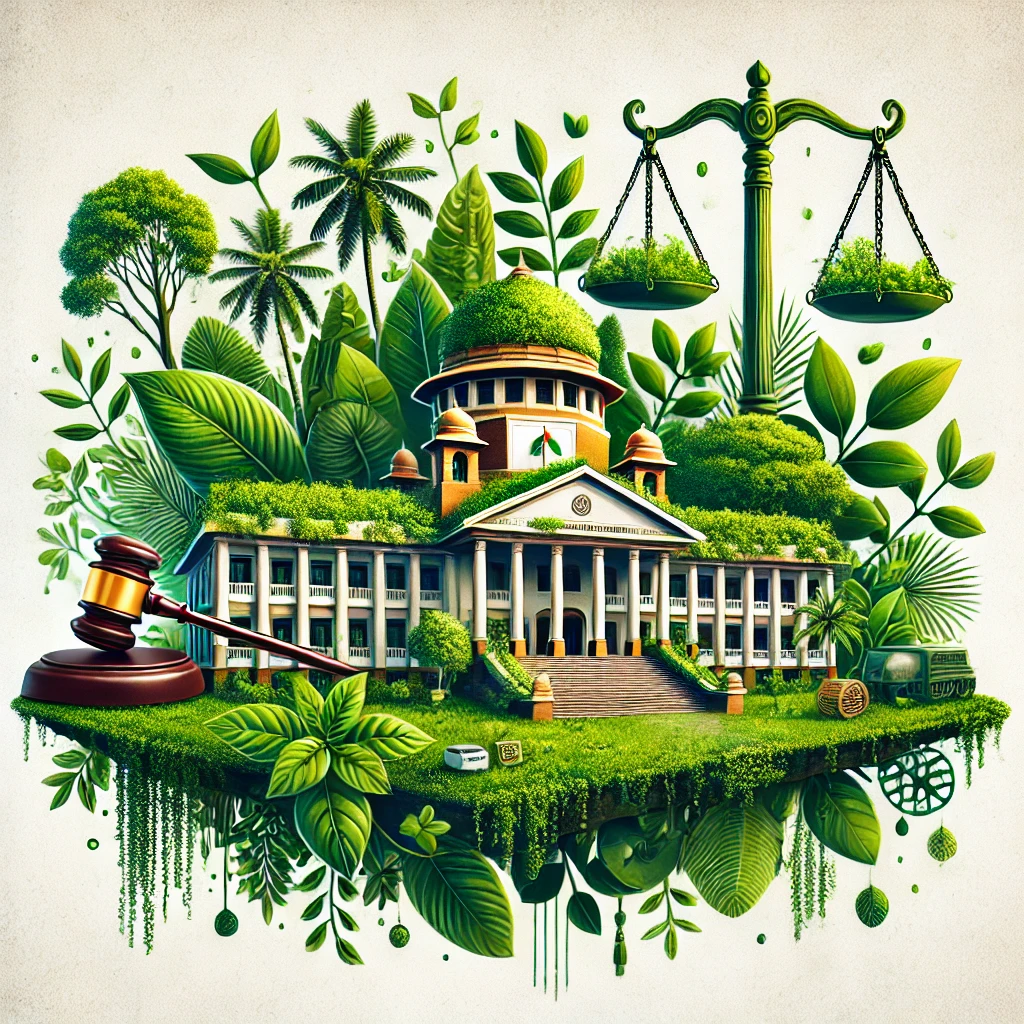Environmental laws at Estonia
Estonia has developed a robust environmental legal framework that emphasizes sustainable development, biodiversity conservation, and pollution control. As a European Union (EU) member state, Estonia’s environmental laws align with EU regulations and directives, but they also reflect national priorities, such as protecting natural resources, addressing climate change, and ensuring sustainable management of forests and biodiversity.
Here are the key environmental laws and policies in Estonia:
1. The Environmental Protection Act (1994, amended 2021)
Objective: The Environmental Protection Act is the core legislation governing environmental protection in Estonia. It provides the legal foundation for addressing environmental issues such as air, water, soil pollution, waste management, and biodiversity conservation.
Key Features:
Pollution Prevention and Control: The law sets the basic requirements for pollution control in air, water, and soil. It sets emission limits for various pollutants, regulates hazardous substances, and establishes conditions for waste management.
Environmental Impact Assessment (EIA): The Act requires that an Environmental Impact Assessment (EIA) be conducted for projects that may significantly affect the environment, such as large infrastructure or industrial projects.
Environmental Monitoring: Establishes the framework for monitoring environmental quality, including air and water quality, to ensure compliance with national and EU standards.
Permit System: Provides for environmental permits and licenses for activities that could affect the environment, such as emissions, water use, and waste disposal.
Public Participation: The law promotes public involvement in decision-making related to environmental issues, ensuring transparency and accountability.
2. The Nature Conservation Act (2004, amended 2021)
Objective: The Nature Conservation Act governs the protection and management of Estonia's natural resources, particularly its forests, wetlands, and biodiversity.
Key Features:
Protected Areas: Establishes various categories of protected areas, including nature reserves, national parks, and landscape protection areas, to conserve important habitats and biodiversity.
Biodiversity Conservation: Focuses on the protection of endangered species and ecosystems. It includes provisions for managing wildlife, flora, and fauna, with special attention to rare and threatened species.
Protected Species: The Act lists species that are protected, restricting activities that could harm them or their habitats.
Management Plans: Requires the development of management plans for protected areas and biodiversity conservation programs, ensuring that these areas are maintained in a sustainable manner.
Sustainable Use: The law encourages sustainable use of natural resources, such as forestry and hunting, to ensure they do not lead to biodiversity loss.
3. The Forest Act (1998, amended 2016)
Objective: The Forest Act regulates the management, conservation, and use of Estonia’s forest resources, ensuring that forest activities are sustainable and that biodiversity is protected.
Key Features:
Sustainable Forest Management: The law requires forest owners to manage their forests sustainably, balancing timber production with biodiversity conservation.
Forest Conservation: Protects forest ecosystems and prohibits activities that would lead to large-scale deforestation, especially in ecologically sensitive areas.
Forest Certification: Encourages forest certification schemes (e.g., Forest Stewardship Council (FSC)) to ensure that timber and other forest products come from sustainably managed forests.
Forest Monitoring: Establishes systems for monitoring forest health and productivity, including the detection of pests, diseases, and forest fires.
4. The Water Act (2001, amended 2020)
Objective: The Water Act regulates the use and protection of water resources in Estonia, addressing both surface water and groundwater.
Key Features:
Water Quality Standards: Establishes standards for the quality of drinking water, surface water (rivers, lakes, and seas), and groundwater.
Water Use: Regulates water extraction, ensuring that water resources are used sustainably, especially in agriculture, industry, and municipal services.
Wastewater Management: Requires the treatment of wastewater to prevent pollution and ensures that sewage systems and treatment plants comply with environmental standards.
Flood Protection: Implements measures for flood risk management and prevention, including the construction and maintenance of flood defenses.
Water Resource Management Plans: Develops river basin management plans to ensure the sustainable use and protection of water resources.
5. The Waste Act (2004, amended 2020)
Objective: The Waste Act regulates the management of waste in Estonia, focusing on waste reduction, recycling, and the prevention of pollution.
Key Features:
Waste Hierarchy: The law follows the EU waste hierarchy, prioritizing waste prevention, followed by preparation for reuse, recycling, other recovery, and disposal as a last resort.
Waste Recycling and Recovery: Establishes targets for recycling and waste recovery, including specific recycling rates for paper, plastics, and metals.
Extended Producer Responsibility (EPR): Implements programs for producers to take responsibility for the collection, recycling, and disposal of products once they reach the end of their life cycle.
Hazardous Waste: Sets regulations for the management of hazardous waste, including special handling, transport, and disposal requirements for materials such as chemicals, batteries, and electronic waste.
Waste Prevention: Focuses on reducing waste generation, encouraging the circular economy, and promoting eco-design practices.
6. The Climate Change Act (2017)
Objective: The Climate Change Act sets Estonia's goals and strategies for mitigating climate change and reducing greenhouse gas emissions.
Key Features:
Emissions Reduction Targets: The Act establishes binding targets for reducing Estonia's greenhouse gas emissions, in line with EU climate goals and the Paris Agreement.
Carbon Neutrality by 2050: The law outlines Estonia's commitment to achieving carbon neutrality by 2050, with a detailed plan for transitioning to a low-carbon economy.
Renewable Energy: Promotes the use of renewable energy sources, such as wind, solar, and bioenergy, as part of the effort to reduce emissions and decrease dependence on fossil fuels.
Adaptation Measures: The Act includes strategies for adapting to the impacts of climate change, such as increasing resilience to floods, heatwaves, and other extreme weather events.
7. The Environmental Liability Act (2007)
Objective: The Environmental Liability Act establishes the legal framework for holding individuals and companies accountable for environmental damage and ensuring the remediation of polluted sites.
Key Features:
Polluter Pays Principle: The law follows the principle that the polluter is responsible for the cost of preventing and remediating environmental damage.
Environmental Damage: Defines environmental damage as harm to biodiversity, water, soil, and air quality, as well as damage caused by the release of hazardous substances.
Restoration of Damaged Environments: Mandates that the responsible parties restore damaged environments, compensate affected communities, and take measures to prevent further damage.
Liability for Past Pollution: The law also addresses liabilities related to past environmental pollution, including the cleanup of contaminated sites.
8. The Environmental Monitoring Act (2014)
Objective: The Environmental Monitoring Act ensures that environmental quality is regularly monitored, with a focus on the collection and analysis of data regarding pollution levels, biodiversity, and natural resources.
Key Features:
Environmental Data Collection: Establishes the system for collecting and disseminating data on environmental conditions, including air and water quality, waste, and biodiversity.
Public Access to Information: Ensures that environmental monitoring results are made available to the public, promoting transparency and public awareness.
Coordination of Monitoring: Coordinates the monitoring efforts of various government agencies and ensures that data is collected in a consistent and reliable manner.
Enforcement and Institutions
Ministry of the Environment (Keskkonnaministeerium): The Ministry of the Environment is the central government body responsible for developing and implementing environmental policies and legislation in Estonia. It oversees various environmental agencies and coordinates national efforts on environmental protection and sustainability.
Environmental Inspectorate (Keskkonnainspektsioon): The Environmental Inspectorate is responsible for enforcing environmental laws, conducting inspections, and investigating violations. It ensures compliance with pollution control, waste management, and other environmental regulations.
Estonian Environmental Board (Eesti Keskkonnateenistus): This body is responsible for environmental monitoring, nature conservation, and the management of protected areas in Estonia.
Challenges and Developments
Air and Water Pollution: Despite improvements, air pollution from traffic and industrial activities remains a challenge, particularly in urban areas. Water pollution from agricultural runoff and wastewater is another concern.
Climate Change: Estonia faces the challenges of transitioning to a low-carbon economy and adapting to the impacts of climate change, including rising sea levels and extreme weather events.
Biodiversity Conservation: While Estonia has extensive protected areas, there is ongoing concern about habitat destruction and the decline of certain species, particularly in agricultural and forestry areas.
Conclusion
Estonia’s environmental legal framework is strong, with a focus on sustainability, pollution control, and the protection of natural resources. The country is committed to addressing climate change, conserving biodiversity, and transitioning to a circular economy. However, challenges remain, particularly in areas such as pollution, climate adaptation, and ensuring the long-term sustainability of natural resources. Through continued investment in environmental protection and sustainable development, Estonia aims to maintain its rich natural heritage and ensure a healthy environment for future generations.




























0 comments